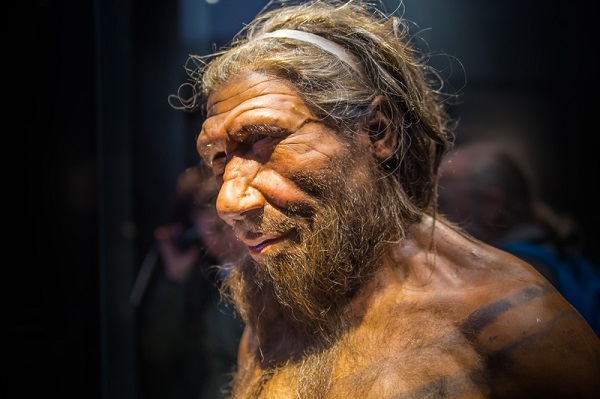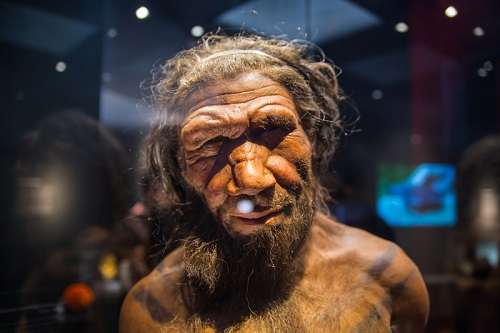

Around 250,000 years ago, the Neanderthal species first appeared. Neanderthals are thought to have been closely related to modern humans. In 1829 the first Neanderthal fossil was discovered, but it was recognised as a potential human ancestor later in the 19th century. They are not our ancestors directly. Fossil and genetic data show that they are distinct species that developed as a side branch in our family tree. Research has shown a more complex image, which contrasts with the negative portrayal of these people as stupid and nasty cavemen. Despite great hardship, Neanderthals survived for hundreds of thousands of years.

This species' remains have been discovered all over Europe and the Middle East. An ancient Chinese skull could provide evidence for the easternmost Neanderthal sighting. "Neanderthalensis" refers to the Valley in Germany known as Neander, the site of the first significant specimen's discovery in 1856. So, "Human from the Neander Valley" is what Homo neanderthalensis means. For 10,000 years, they coexisted in Europe with Homo sapiens.
In France's Le Moustier, a 45,000-year-old skull was found. In this individual, one can already see the defining characteristics of Neanderthals.
Later in 1909 in La Ferrassie, France, a 50,000-year-old skull was found. The 'classic' traits of European Neanderthals can be seen in this elderly man's cranium.
A boy's skeleton dating to 24,000 years ago was found in Abrigo do Lagar Velho in 1998. The finders of this specimen labelled it a hybrid of Homo sapiens and Neanderthals. This theory was based on the proportions of the knee to the leg, but since the head, pelvis, and forearms are clearly human, it is more likely due to the adaptation to the climate. Due to the absence of information on the variances within juvenile groups, comparisons to other humans of this era are challenging.
Neanderthal men are of two different categories: conservative types and progressive types.
The adult male Neanderthal bones were discovered at the La Chapelle-aux-Saints cave site in 1908, which is close to the village of the same name in central France. A skull with the lower jaw, a clavicle, two virtually entire humeri, two incomplete radii, several hand bones, ilia parts, two partial femora, sections of tibiae, numerous foot bones, and a significant number of vertebrae and ribs were among the items found.
The La Chapelle-aux-Saints skeleton provides evidence of Neanderthals' demanding lifestyles, high risk of injury, and significant physical degeneration brought on by everyday activities. This evidence includes the degeneration of the jaw joint and loss of the majority of the cheek teeth, as well as inflammation of the ear canals, which may indicate hearing loss.
Its cerebral volume was determined to be 1600 cc and had a massive, heavy cranium. Its head measured 208 millimetres in length and 155 millimetres in width
In comparison to the skull, the face was more developed.
The frontal area of the head was relatively large and had an underdeveloped head.
There was an inflated and depressed occipital area.
Big and powerful was the lower jaw while Chin had less growth.
The humerus was big and robust. Low vault height. The size of hands and feet differed. Strong and substantial, femur. Its palm has more in common with apes.

The Mount Carmel skeletons were found in two nearby caves in Palestine in 1931–1922. The Levalloiso Mousterian industry owned the cave's cultural artefacts. At Skhūl, more well-preserved long bones and three quite entire skulls were found. These resemble Neanderthal bones (H. neanderthalensis) in that they had some rough features (like brow ridges), but not all of the traits of Neanderthals
Males at Mount Carmel were taller than females.
Their head was large, and their vault was of medium height.
Males' cranial capacity ranged from 1418 cc to 1857 cc, while girls' ranged from 1300 cc to 1350 cc.
The zygomatic process resembled modern humans. Lack of the canine fossa. It had a flat orbit.
In 1829 the first Neanderthal fossil was discovered, but it was recognised as a potential human ancestor later in the 19th century. "Neanderthalensis" refers to the Valley in Germany named Neander, the site of the first significant specimen's discovery in 1856. The finders of this specimen labelled it a hybrid of Homo sapiens and Neanderthals. Conservative Neanderthal bones of an adult male were discovered at the La Chapelle-aux-Saints cave site in 1908, which is close to the village of the same name in central France. This evidence includes the degenerated jaw joint and the majority of the cheek teeth loss, as well as inflammation of the ear canals, which may indicate hearing loss. In comparison to the skull, the face was more developed. The frontal area of the head was relatively large and had an underdeveloped head. The humerus was big and robust. The size of hands and feet differed. On Mount Carmel, the progressive Neanderthal men were taller than women. Their vault was of medium height, and they had huge heads. These resemble Neanderthal bones in that they had some rough features, but not all of the traits of Neanderthals.
Q1. Who was the first person to find a Neanderthal "burial site"?
Ans. Otto Hauser made the initial Neanderthal "Burial site" discovery.
Q2. What was the diet of the Neanderthals?
Ans. Meat dominated the diet of the typical Neanderthal. However, the remains of starch grains suggest that Neanderthals also consumed vegetation.
Q3. Did the Neanderthals hunt humans?
Ans. They were vicious and effective apex predators that killed, raped, and consumed early humans for more than 50,000 years. They were aggressive, strong, and dreadful carnivores.